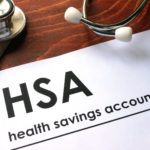[su_box title=”Keep in mind…” style=”default”]
- A Section 125 cafeteria plan lets you pay medical bills in advance of having the money in your account
- The plan allows employers to provide a tax benefit to their employees
- The plan’s “use it or lose it” clause may cause it to not be a good fit for all employees
[/su_box]
The magnitude of health insurance changes that have occurred over the past few years have resulted in many consumers feeling lost or confused. With more people opting for lower-cost high-deductible health insurance coverage, the risk of greater out-of-pocket spending for medical services increases as well.
Fortunately, there are avenues that have been provided by the government to help ease these concerns and equip families to better prepare and plan for upcoming medical expenses, whether foreseen or unexpected. One of these avenues is that of the Section 125 Cafeteria Plan.
Explore various free health insurance quotes today by entering your zip code above!
What exactly is a Section 125 cafeteria plan?
The term refers to a provision in IRS code, namely “Section 125”, that allows employers to provide tax-sheltered relief for employees who wish to set aside money for certain allowable expenses. These may include medical expenses, child- or dependent-care expenses, and/or allowable insurance premiums.
The fact that consumers may choose which type(s) of expenses for which they wish to plan is the basis for the term “cafeteria plan”. Just as diners in a cafeteria make choices as to what they want to put on their plates, the cafeteria health plan model lets participants choose which types of options they wish to use.
How does a Section 125 plan work?
Each year, a window of time is designated in which employees can enroll in their employers’ Section 125 plan. Employees who enroll in the plan designate a specific amount of money to be deducted from each paycheck over the plan year as well as the purpose for the deducted funds.
These funds are deducted accordingly from each paycheck on a pretax basis, thus lowering the employee’s taxable income and reducing Federal, Social Security and Medicare taxes withheld from the employee’s paycheck.
For example:
John Doe decides that he will need $1,200 over the next plan year for medical expenses. He is paid twice monthly, so $50 is deducted pre-tax from each of his paychecks over the next year. Mr. Doe will also realize an additional perk because the taxes withheld from his check will now be figured on a gross salary that is $50 less than it was before.
How does a Section 125 plan differ from a Health Savings Account?
The most glaring difference between the two types of plans involves ownership of the funds. A Section 125 Cafeteria Plan is an employer-sponsored plan that is not available to persons who are self-employed or retired.
Unlike a health savings account, Section 125 funds are often referred to as the “use it or lose it” plan.
Money remaining in a Section 125 fund at the end of the year is “lost” to the employee although a modification in the IRS Code in 2005 now allows participants to carry over up to $2,000 to the next plan year.
Why would anyone prefer a Section 125 plan over a health savings account?
Health Savings Accounts behave in the same manner as other savings or deposit accounts in that you cannot spend the money if it isn’t there. In contrast, Section 125 funds can be spent based upon the obligation rather than the actual balance in the account.
In the example above, even though Mr. Doe may have signed up for $1,200 to be taken out of his paycheck during the course of the year, he can go ahead and spend $1,200 in qualifying expenses before the full amount has been deducted.
For instance, if he finds he needs to spend the full $1,200 on dental work in January but he hasn’t yet paid in the full $1,200 to his cafeteria plan, he can go ahead and spend the money anyway.
Another advantage to the Section 125 Cafeteria Plan is its provision that allows participants to earmark their funds for daycare expenses.
While this component of the plan does not allow the participant to spend the money before it is in the account (unlike the medical reimbursement plan), it does allow employees to enjoy the tax break for this type of expense that is not normally an allowable expense for health savings account funds.
Additionally, unlike health savings accounts, a person is not required to be enrolled in high-deductible insurance coverage in order to be eligible for participation in a Section 125 cafeteria plan.
What restrictions accompany a Section 125 Cafeteria Plan?
Sole proprietors are not eligible to participate in the plans offered to their employees with the exception of their spouses as long as the eligibility requirements for coverage are met. The same applies to partnerships in that, while the partners may not participate, their spouses may be eligible to do so. Restrictions also apply to shareholders and other officers of S-Corporations.
There are also measures that must be followed by any participating employer to ensure that no discrimination has taken place in offering the Section 125 plan to any employee.
Summing It All Up
The Section 125 Cafeteria Plan can be a viable solution for persons or families who normally experience a high volume of medical expenses annually and thus choose not to participate in a high-deductible insurance plan. It can also be a wise choice for those who do choose a high-deductible plan and need to offset the deductible while saving tax dollars as well.
As is always the case, knowledge is power and being aware of the advantages as well as the disadvantages can help empower the consumer to make the best choice!
Enter your zip code below to compare free health insurance quotes and find a plan that fits all your needs!
[su_spoiler title=”References:” icon=”caret-square” style=”fancy” open=”yes”]
- http://www.investinganswers.com/financial-dictionary/personal-finance/pre-tax-contribution-5103
- https://www.irs.com/articles/what-is-taxable-income-2
- https://www.irs.gov/pub/irs-drop/n-13-71.pdf
- https://www.nerdwallet.com/blog/health/what-is-an-hsa/
- https://www.healthcare.gov/glossary/high-deductible-health-plan/
[/su_spoiler]







